The Economics and Statistics Division maintains archives of previous publications for accountability purposes, but makes no updates to keep these documents current with the latest data revisions from Statistics Canada. As a result, information in older documents may not be accurate. Please exercise caution when referring to older documents. For the latest information and historical data, please contact the individual listed to the right.
<--- Return to Archive
For additional information relating to this article, please contact:
February 16, 2023EMPLOYMENT INSURANCE, DECEMBER & ANNUAL 2022 In December there were 22,260 Nova Scotians in receipt of regular employment insurance benefits (seasonally adjusted). Nova Scotia's seasonally adjusted regular employment insurance usage declined by 160 (-0.7%) from November to December 2022.
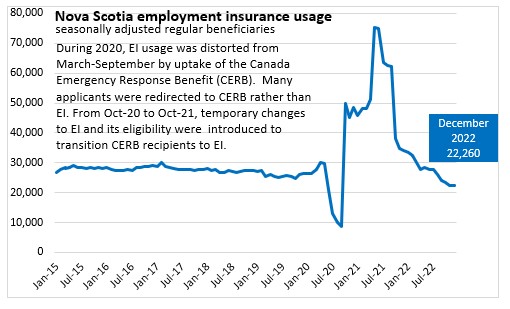
There were 398,370 Canadians that received regular employment insurance benefits in December (seasonally adjusted), a decrease of 8,120 (-2.0%) from November.
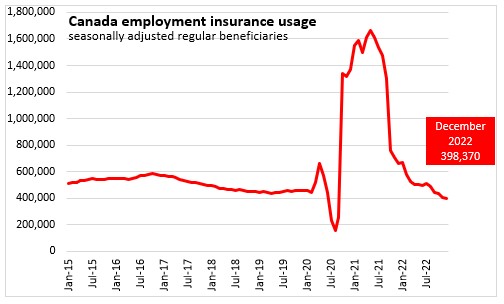
Eight provinces reported a decline in regular beneficiaries in December with Ontario (-3.8%) posting the largest month-over-month decline. Prince Edward Island and British Columbia were the only two province reporting month-over-month increase in December.

Annually in 2022, Nova Scotia's employment insurance usage was down by 49.1% when compared to the previous year. National employment insurance usage was down by 62.6% with declines in all provinces. The largest decline in employment insurance usage was reported in Ontario and the smallest in Newfoundland and Labrador.
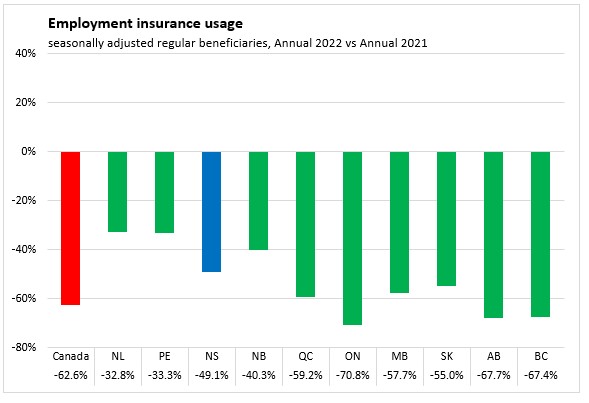
The number of employment insurance beneficiaries amounted to 4.2% of the labour force in Nova Scotia in December 2022. Nationally, the share of beneficiaries was 1.9% of the labour force.

Use of employment insurance (as a share of the labour force) declined compared to pre-pandemic levels for all age cohorts of women as well as for men.
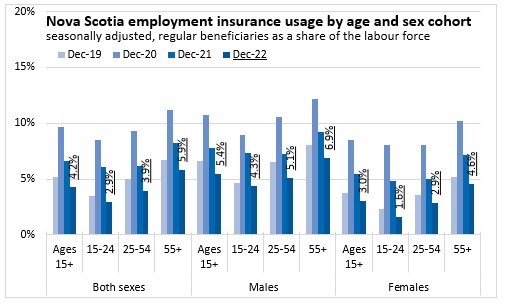
Across all age cohorts, there are fewer women than men of comparable ages using employment insurance.

Employment insurance use in Nova Scotia remains the highest among those in trades and transport/equipment operators, sales and service occupations and those working in natural resources and agriculture occupations.
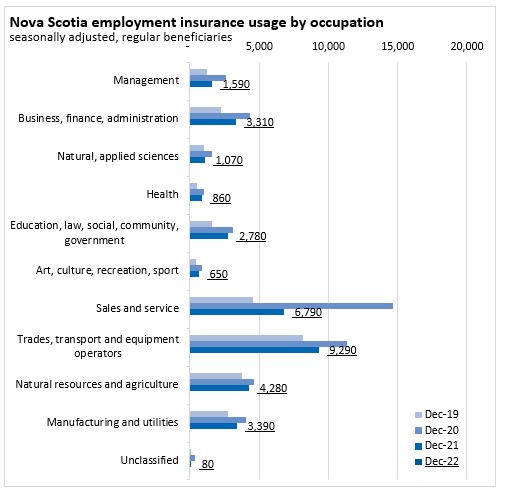
Use of employment insurance was down for all counties comparing unadjusted regular beneficiaries for December 2022 with those reported in December 2021.

In percentage terms, the largest decline in employment insurance use from December 2021 to December 2022 was reported in Halifax (-53.3%). Guysborough reported the smallest decline (-9.3%).
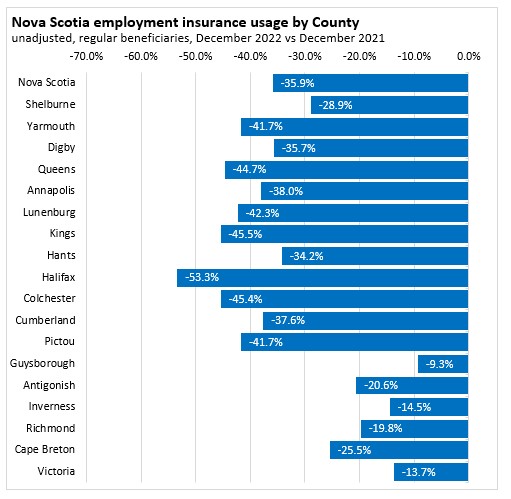
Notes: From March to September 2020, Statistics Canada suspended publication of employment insurance statistics. Canadians were eligible for the Canada Emergency Response Benefit (CERB) during this period. Data for the period from March to September 2020 shows how an initial rise in employment insurance claims at the start of the pandemic was reversed as new employment insurance applicants were directed to CERB instead. After September 27, 2020 there was a temporary expansion of employment insurance and CERB recipients were transitioned back to employment insurance. Temporary changes, including a reduction in the number of insurable hours required for eligibility, ended in September 2021.
Source: Statistics Canada. Table 14-10-0011-01 Employment insurance beneficiaries (regular benefits) by province and territory, monthly, seasonally adjusted; Table 14-10-0323-01 Employment insurance beneficiaries by census division, monthly, unadjusted for seasonality; Table 14-10-0337-01 Employment insurance beneficiaries (regular benefits) by province, territory and occupation, monthly, seasonally adjusted; Table 14-10-0287-01 Labour force characteristics, monthly, seasonally adjusted and trend-cycle, last 5 months
<--- Return to Archive